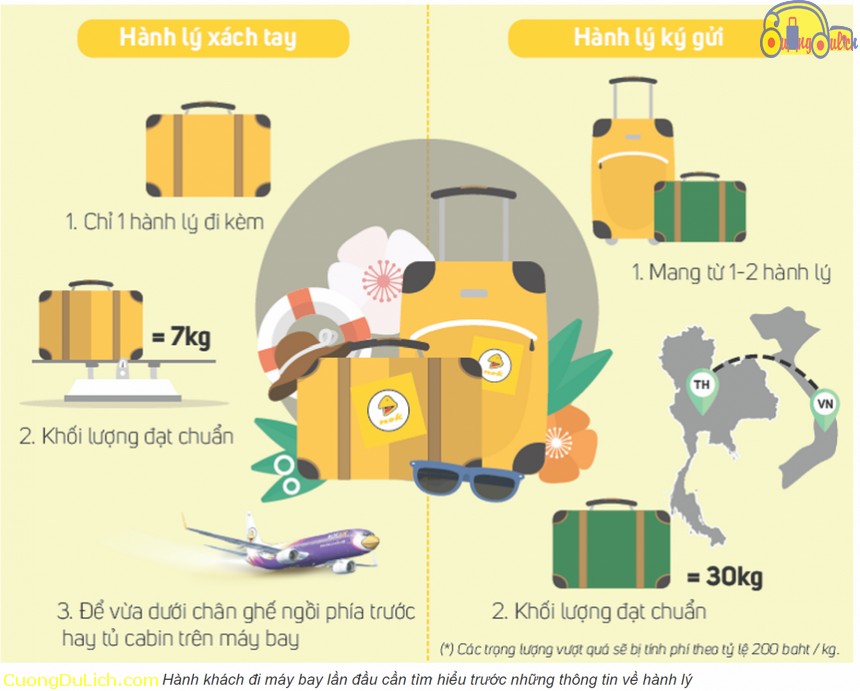Hello everyone! In the previous videos, Blog Travel Việt has provided detailed instructions on how to go through airport procedures. Recently, many of you have been asking about what items are allowed and not allowed in carry-on and checked baggage when flying. Unlike other modes of transportation, regulations regarding baggage when boarding a plane are very strict. So, what items are allowed? And what items are not allowed on the plane? Blog Travel Việt will answer all your questions in this video. You will learn:
- Which items are not allowed on the plane
- Can you bring water, shampoo, and shower gel on the plane?
- Are lighters and matches allowed on the plane?
- Can alcoholic beverages be brought on the plane?
- Can electrical items like hair curlers and hair dryers be brought on the plane?
- Can electronic devices like laptops and phones be brought on the plane?
- Are laser guns or laser devices (except laser pens used for teaching, presentations) allowed on the plane?
- Can items like knives, swords, machetes, spears, axes, scalpels, daggers, knuckledusters, maces, bows and arrows, crossbows be brought on the plane?
- Can toy items resembling real weapons be brought on the plane?
- Can knives with handles, scissors be brought on the plane?
- Can items like pliers, wrenches, crowbars be brought on the plane?
- Can cameras, cameras, camera tripods be brought on the plane?
- Can food be brought on the plane?
- Can batteries be brought on the plane?
- Can pets be brought on the plane?
- Can Western medicine be brought on the plane?
- Can ashes, remains be brought on the plane?
- Can live or frozen seafood or meat be brought on the plane?
- Can fresh fruits, vegetables be brought on the plane?
- Can fragile and valuable goods be brought on the plane?
- Can I have perfume in checked baggage?
- Can I bring a bicycle?
- Can I bring a surfboard, snowboard, skateboard, skis, or scooter?
- Can I bring a musical instrument?
- Can I bring a golf club set?
- Can I bring a fishing rod?
- Are strollers, wheelchairs allowed in checked baggage?
- Can fish sauce, soy sauce be brought on the plane?
- Can cigarettes be brought on the plane?
- Items prohibited from being brought on international flights
- Items prohibited from being brought on planes in most countries
- Items not allowed on planes to Japan:
- Items not allowed on planes to the United States:
- Items not allowed on planes to Australia:
- Items not allowed on planes to South Korea:
- Items not allowed on planes to Singapore:
- Items not allowed on planes to China?
- Items not allowed on planes to Dubai
- Items not allowed on planes to the UK
- Items not allowed on planes to Germany:
- Items not allowed on planes to Italy:
- Items not allowed on planes to France:
- Items not allowed on planes to Russia:
- Tips to help you prepare standard luggage without adjustments
——————————
Now let’s follow Cuồng Du Lịch to answer each question.
Regulations on baggage when flying
1/ ITEMS PROHIBITED FROM BEING BROUGHT ON THE PLANE IN ANY FORM, WHETHER CARRY-ON OR CHECKED BAGGAGE
This includes:
- Explosive materials such as: fireworks, firecrackers, slow-burning fuses, grenades, gunpowder, flares, and similar items
- Flammable liquids such as: gasoline, oil, alcoholic beverages with alcohol content over 70%, camphor oil
- Explosives, flammable or non-flammable gases (such as spray paint cans, butane gas, refillable gas lighters), refrigerants (such as underwater breathing gas cylinders, liquid nitrogen), flammable liquids (such as paint, thinners, solvents); flammable solids (such as matches, lighters); organic peroxides (such as plant resins); toxic substances, infectious substances (such as viruses, bacteria); radioactive substances (such as Ra-dium); corrosive substances (such as acids, alkalis, mercury, thermometers), magnetic materials, oxidizing materials (such as bleach).
- Bags, pouches, or devices with built-in alarm devices in general.
- Other dangerous items: asbestos, fire extinguishers, dry ice (over 2.5kg), lithium batteries for electronic devices (>160Wh or >8g lithium), Samsung Galaxy Note 7 phones, devices containing lithium batteries such as self-balancing electric scooters, mini electric scooters, two-wheeled electric scooters, self-balancing skateboards…
- Tools/devices designed to cause shock/unconsciousness or immobilize individuals: electric shock guns and stun batons, chemical spray canisters, gas spray canisters used for incapacitation, pepper spray canisters, acid solution spray canisters,…
All the items above are prohibited from being brought on the plane in any form, whether carry-on or checked baggage, so remember not to bring them along.
2/ Can water, shampoo, shower gel be brought on the plane?
Since May 1, 2016, on domestic flights of airlines such as Vietnam Airlines, Vietjet Air, Bamboo,… passengers are allowed to bring water, facial cleansers, and other non-prohibited liquids in their carry-on baggage. However, for international flights, airlines still limit the amount of liquids allowed on board.
For domestic flights
- Passengers can bring water, other non-prohibited liquids, and cosmetics such as moisturizers, hair spray, shampoo, shower gel, facial cleansers, spray bottles… freely on domestic flights
- Medications such as nasal sprays, syrups, oils, ointments need to be accompanied by a prescription. The prescription should include the name, address of the prescribing doctor or person, the name and address of the medication user matching the name on the passenger’s ticket.
- Milk and food for children, infants are allowed to be brought when traveling with children, infants.
- Strong-smelling foods like fish sauce, soy sauce, cigarettes, broth, soup, cooking oil, vinegar, shrimp paste… should be limited on board. If carried in carry-on baggage, passengers must pack these foods carefully to avoid unpleasant odors.
For international flights
- According to regulations for carrying liquids on international flights, passengers are not allowed to bring water through security checkpoints, waiting lounges, or on board. If needed, passengers can purchase water at shops in the waiting area.
- Other liquids such as shampoo, shower gel, facial cleansers, spray bottles, glue…: Airlines like Vietnam Airlines, Vietjet Air, Jetstar allow a maximum of 1 liter but must be divided into small containers, each container not exceeding 100 ml. The containers must be placed separately in a transparent bag for security personnel to easily check.
- Airlines also allow passengers to bring milk, food for infants when traveling with infants, medications with the name, address of the doctor and patient clearly stated, special foods needed during the flight.
- Additionally, if you purchase beverages, alcohol, perfumes, cosmetics… at airport shops or duty-free stores, you are allowed to bring them on board without volume or quantity restrictions. However, make sure to seal the items tightly.
- The containers must be placed in a transparent plastic bag up to 80cm and sealed to prevent spills, breakage. Note that airport staff may open the bag to check the liquid inside, and if the liquid does not meet the requirements, your luggage may be denied boarding.
3/ Are lighters and matches allowed on the plane?
- Lighters are included in the list of dangerous items prohibited or restricted from being carried on board. However, passengers are still allowed to carry a small safety matchbox as per state regulations.
- Specifically, air passengers are allowed to carry one small safety matchbox. Passengers are allowed to carry small gas lighters, torch lighters, torch lighters with protective caps to prevent accidental activation.
- Each passenger is allowed to carry one item for personal use, not containing non-permeable liquid fuel (not a liquefied gas).
- Passengers carrying lighters and matches that meet the above criteria do not need airline approval and do not need to inform the flight commander.
- Additionally, smoking on board or in enclosed lavatories is also prohibited, and passengers violating this rule will be penalized accordingly.
- Lighters that passengers are not allowed to carry when flying include matches that ignite anywhere, torch lighters, torch lighters without protective caps to prevent accidental activation. In addition, lighters that can be refilled with gas, zippo-style gasoline lighters are also not allowed on board.
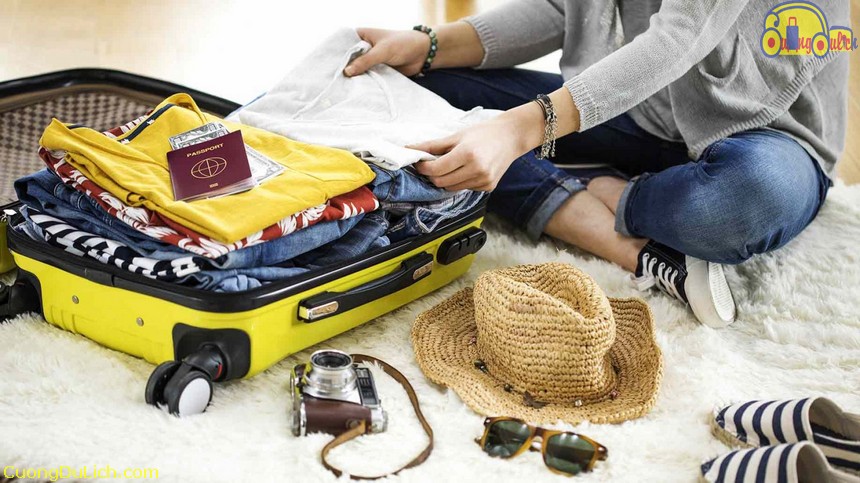
4/ Can alcoholic beverages be brought on board?
Regulations for bringing alcohol on domestic flights
- Since May 1, 2016, the Civil Aviation Authority of Vietnam has issued new regulations regarding the transportation of liquids on airplanes, all of which are outlined in Decision 633/QD-CHK as follows:
- Alcoholic beverages with an alcohol content below 24% are allowed without restrictions.
- Alcoholic beverages with an alcohol content between 24% and 70% are allowed up to a maximum of 5 liters per passenger. The products must be contained in the manufacturer’s original packaging.
- Alcoholic beverages with an alcohol content exceeding 70% are not allowed to be brought on board.
Regulations for bringing alcohol on international flights
- For passengers flying international routes, there are specific and strict regulations to ensure absolute safety for passengers on long journeys. Each passenger is only allowed to bring up to 1 liter of alcohol or other liquids.
- Alcohol or liquids purchased at duty-free shops in international quarantine areas or on international flights have no volume restrictions. However, the important condition is that the products must be contained in a secure plastic bag and sealed. Inside, there must be a receipt/invoice clearly stating the place of purchase, date of purchase, easily readable without opening the bag.
Things to remember when bringing alcohol on board
You can carry alcohol on board as hand luggage or pack it in checked baggage. Some small tips from Vietjet Air will help you easily organize your luggage with alcohol:
- If you are carrying multiple bottles of alcohol, you should bring multiple bottles, each with a capacity of no more than 1 liter and pack them carefully in foam boxes for checked baggage. Check carefully, do not pack hastily as it may break during transportation.
- If you intend to buy homemade rice wine or unlabeled homemade alcohol to bring on board, you should reconsider. These types of alcohol are often rejected for transport due to not meeting aviation regulations.
- Do not lose the receipt or invoice from the place of purchase of the alcohol. If you cannot prove the place of purchase and time of purchase, your alcohol will be difficult to bring on board.
- Alcoholic beverages with alcohol content are allowed to be brought on board after purchasing at international quarantine areas or on international flights must be contained in a transparent bag from the store, sealed, and have a purchase receipt for easy inspection.
5/ Can electrical items such as hair curlers, hair dryers be brought on board?
- Electrical items are devices that use electricity to operate. Items such as hair dryers, hair straighteners, electric combs, hair curlers, multifunctional hair curling and straightening machines, electric rice cookers, smoothie makers, etc.
- Passengers on airplanes are allowed to carry hair curlers, hair dryers on their person, as carry-on luggage or checked baggage. However, each passenger is not allowed to carry more than 1 hair curler containing hydrocarbon gas, with the condition that the heating part of the device has a safety cap. Do not carry gas for hair curler refills. The total weight of all these items must not exceed 2kg per person.
- Electrical items such as electric rice cookers, pressure cookers, blenders, etc., must be checked baggage, and make sure you have packed them carefully as the airline will not be responsible for any damage.
6/ Can electronic devices such as laptops, phones be brought on board?
The following items are considered electronic devices:
- Laptop computers
- Smartphones
- Tablet computers (iPads)
- Cameras, camcorders
- Power banks
All airlines recommend that passengers keep items such as laptops, smartphones, cameras, iPads, in their carry-on luggage to ensure the safety of these items, avoiding damage or loss during transportation. If passengers still want to transport them as checked baggage, they must pack them carefully to avoid breakage, damage, especially turning off these devices completely. In addition, passengers also need to sign a liability waiver with the airline.
When carrying electronic devices in carry-on luggage, it is not a matter of carrying them however you like but following the following regulations:
- Electronic devices must have a battery capacity of less than 100Wh or a weight of less than 2g.
- Electronic devices with a battery capacity of 100Wh – 160Wh or a weight of 2g – 8g must be accepted for transport by the airline.
- Electronic devices with a battery capacity above 160Wh or a weight above 8g are prohibited from transport, whether as checked baggage or carry-on luggage.
- When passing through security screening, all electronic devices carried in carry-on luggage must be placed separately on a tray before going through the scanner. The tray for electronic devices will run on the conveyor belt through the scanner.
- Additionally, the Galaxy Note 7 is not allowed in carry-on luggage, and the MacBook Pro 2015 is not allowed in checked baggage.
7/ Can laser guns or laser devices (except laser pens used for teaching, presentations) be brought on board?
They can be brought, but only as checked baggage and absolutely not allowed to be carried on the person or as carry-on luggage.
8/ Can knives, swords, spears, machetes, axes, daggers, swords, maces, flails, bows and arrows, crossbows… be brought on board?
They can be brought, but only as checked baggage and absolutely not allowed to be carried on the person or as carry-on luggage.
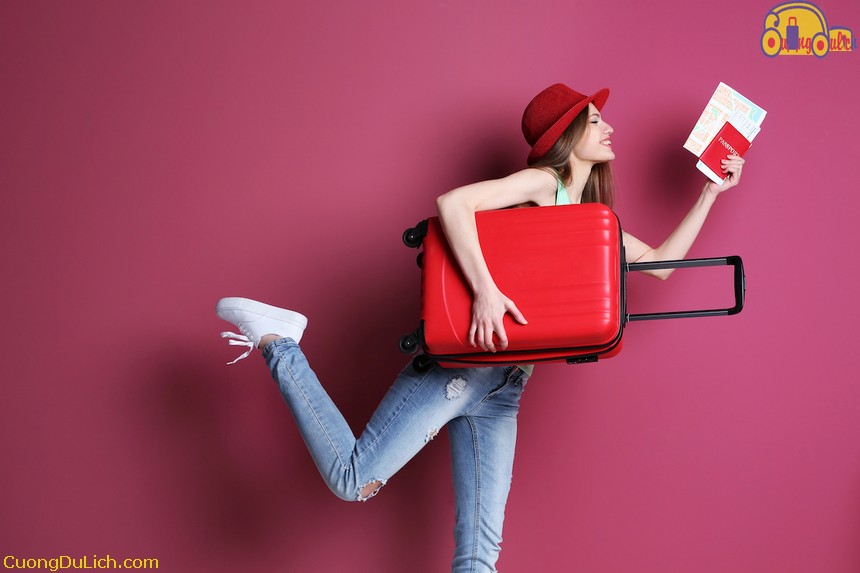
9/ Can toy objects resembling real weapons be brought on board an airplane?
These toy objects include guns, bombs, mines, grenades, torpedoes, missiles, bullet casings, and objects made from bullet casings. Airlines have regulations that prohibit these items from being carried in carry-on baggage or on your person, but you can check them in your luggage.
10/ Can knives with handles, scissors be brought on board an airplane?
Knives with blades (excluding knife handles) or scissors with blades longer than 6cm or a total length of handle and blade over 10cm are not allowed in carry-on baggage or on your person, but you can carry them in checked baggage.
11/ Can tools like pliers, wrenches, crowbars be brought on board an airplane?
Tools like pliers, wrenches, crowbars, screwdrivers, paper cutting knives, or sharp objects longer than 10cm, metal-tipped sticks/canes are considered potentially dangerous items, so you cannot carry them on your person or in your carry-on baggage. These items will be detected during security screening and removed from your luggage. You can place them in your checked baggage.
12/ Can cameras, tripods be brought on board an airplane?
Cameras are recommended to be carried in carry-on baggage to avoid damage, but camera tripods, camera stands, selfie sticks, metal-tipped canes are absolutely not allowed.
13/ Can food be brought on board an airplane?
Dry foods, snacks, chocolates, nuts, etc., are allowed to be brought on board. However, some foods with strong odors like durian, jackfruit, or rambutan are prohibited. If you want to bring durian or jackfruit on board in your carry-on or checked baggage, make sure to separate the fruit from its husk, pack it in a box, and seal it to prevent odors from spreading.
14/ Can batteries be brought on board an airplane?
Batteries are also among the items not allowed on board, except for personal devices such as watches, cameras, camcorders, phones, laptops…
Lithium or lithium-ion batteries with a capacity of 100WH to 160WH can be carried up to 02 pieces per person or in carry-on baggage, and the batteries must be individually packaged to prevent short circuits.
Power banks are absolutely not allowed in checked baggage.
15/ Can pets be brought on board an airplane?
Today, pets such as dogs, cats, etc., are beloved companions for many families who wish to travel with them.
Currently, some domestic airlines in Vietnam, such as Vietnam Airlines, allow passengers in business class to bring pets into the cabin. Most other airlines only transport pets as checked baggage. However, transporting pets requires several procedures:
Animal quarantine documents, valid health certificates within 24 hours before the flight to ensure the pet is healthy and free from dangerous diseases.
Vaccination records
The pet carrier must meet specific requirements:
- The minimum size of the carrier must be increased by about 30% compared to the actual size of the pet so they can comfortably stand, sit, and turn inside the carrier.
- The carrier design must have ventilation holes.
- A sturdy structure to prevent the pet from escaping.
- The carrier must have a handle with a safe distance.
- Inside the carrier, there should be compartments for food and water.
- A cushion
- Currently, airlines accept two types of carriers: plastic carriers and foldable metal carriers.
Visit the airline’s office to register the pet transportation procedures and pay the fee (based on weight) at least 1 day before the flight.
For international pet transportation, additional preparations are required:
Visa for the pet, import permit, export permit, or transit permit depending on the flight itinerary.
Contact the Vietnamese Embassy in the country you plan to visit to understand the pet import procedures.
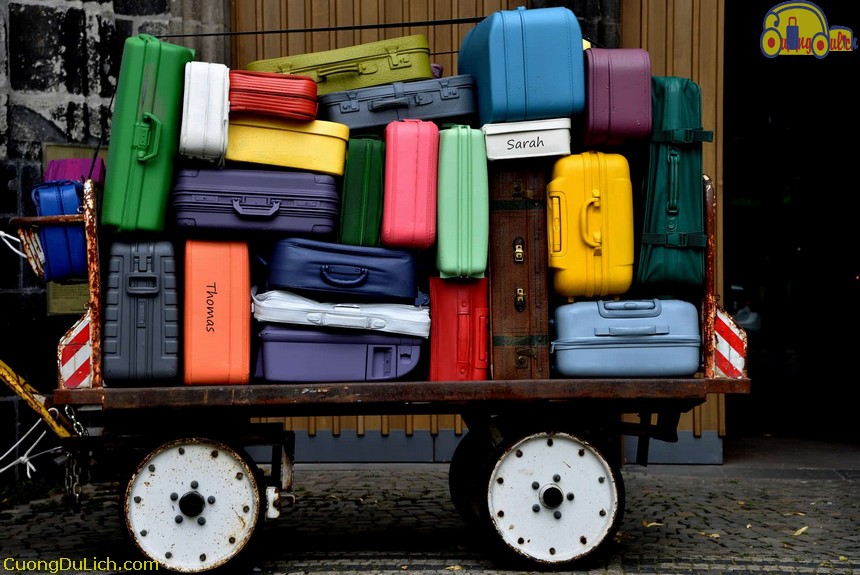
When transporting pets by plane, there are 6 steps to be carried out in the following sequence:
- Step 1: Prepare all the necessary documents as required, as mentioned in section 1 above.
- Step 2: Prepare the cage according to regulations, enough food and drinks for the pet to use during the flight.
- Step 3: Purchase a plane ticket for your pet as checked baggage.
- Step 4: Fill in all the information and wait for the airline’s response to see if you are approved to transport your pet by plane.
- Step 5: Bring your pet early to complete the check-in procedures (You should label your cage with your name and address to avoid getting lost).
- Step 6: Retrieve your pet similar to collecting checked baggage normally.
If passengers intend to bring their pets on the plane, they should inform the ticketing staff about their pets when booking the flight to receive the most detailed advice.
16/ Can Western medicine be brought on board?
Yes. There is no limit to the quantity of prescription or non-prescription medications that can be carried on domestic flights. For international flights, there are regulations allowing only a reasonable amount of oral medications, including prescription and non-prescription drugs. Restrictions apply to liquid, aerosol, and gel medications.
17/ Can ashes or remains be brought on board?
This is a restricted type of baggage, but in some cases, if transported correctly, you may bring them on board.
Ashes or remains must be securely sealed in an airtight container and accompanied by a death certificate and medical inspection.
18/ Can fresh or frozen seafood or meat be brought on board?
These items can only be checked as baggage if they are properly packaged. Only foam boxes and/or coolers containing dry/non-perishable food that have been inspected by authorities can be processed. If passengers refuse inspection, airlines have the right to refuse to transport the baggage.
Packaging requirements
- Do not use crushed/wet ice.
- Inner packaging: wrap in a nylon bag with a minimum thickness of 0.1 mm and wrap in multiple layers of nylon on the outside.
- Outer packaging: After packaging as above, fresh/perishable/frozen items must be placed in a foam box or plastic box or container with a waterproof material, then cover the lid, seal carefully with tape to prevent leakage during transport and stacking. Each foam box/plastic box/container must be wrapped in a nylon layer with a minimum thickness of 1mm.
Therefore, if you intend to bring shrimp, chicken, fish, or other meat on board, you can still do so as long as you package them correctly.
19/ Can fresh fruits and vegetables be brought on board?
Airlines advise passengers to limit the transportation of fresh fruits and vegetables. In special cases, the airline may agree to transport them in checked baggage if the passenger packs them carefully to avoid affecting other checked baggage, and the passenger must bear any resulting losses.
20/ Can valuable and fragile items be brought on board?
Passengers are advised not to check these items as baggage. If these items are checked as checked baggage, the passenger agrees to bear any transportation risks.
These items include money, jewelry, rare precious metals, silver items, electronic devices, computers, cameras, camcorders, negotiable papers, securities, other valuable documents, passports, and personal documents.
Items of high value such as money, jewelry, precious metals, Business documents, contracts, negotiation papers, or other valuable documents, Personal documents, passports should not be placed in checked baggage.

21/ Can I pack perfume in my checked baggage?
Yes, but the experience of many travelers as well as the advice of airlines is that you should pack perfume in your carry-on luggage to avoid unnecessary breakage.
For domestic flights, perfume can be carried in both checked and carry-on baggage, but each bottle must not exceed 500ml or 500g. The total amount of liquid carried in the luggage must not exceed 2 liters or 2kg per passenger. In addition, perfume with a spray nozzle must be tightly closed to avoid activation and leakage during transport.
22/ Can I bring a bicycle?
Vietnam Airlines, Pacific Airlines, and Bamboo Airways all allow the transportation of bicycles. You can bring your own bicycle as long as it is properly packaged and meets the airline’s safety requirements.
Bicycles are transported as checked baggage, including: Regular bicycles, sports bicycles, bicycles with engines (operating on thermal or electrical energy, etc.)
Oversized item handling fees apply to any item longer than one meter (1000mm, 39in), including wheels, handlebars, and packaging.
Oversized items will be included in your total checked baggage weight, so make sure you have purchased enough checked baggage weight.
Bicycle packaging
You will need to pack your bicycle in a suitable bike bag or box. We do not provide bags or boxes, so you are responsible for ensuring that the bicycle is properly packed for transport.
Bicycles must be packed in a box and meet the following conditions:
- The handlebars must be turned in the direction of the bicycle’s length;
- Remove and pack bulky parts such as: Pedals, lights, mirrors, kickstands, etc.;
- The tires must be deflated before packaging.
- Tandem bicycles, recumbent bicycles, and folding bicycles can be checked as long as they meet size and weight requirements. Folding bicycles do not need to be in a bike bag.
- Please note that the weight of each individual piece of luggage must not exceed 32 kg. Maximum length regulations apply, but may vary depending on the type of aircraft and service.
Electric bicycles
You can only bring electric bicycles as checked baggage if the lithium battery meets safety requirements.
- If the battery is under 100Wh, you can bring it as checked baggage.
- If the battery is between 100Wh and 160Wh, you need airline approval – email [email protected] to request approval.
- If the battery is over 160Wh, it must be sent through a hazardous goods shipping company. See Qantas Heavy Freight Transport for more information.
23/ Can I bring a surfboard, snowboard, skateboard, or scooter?
You can bring a surfboard, snowboard, or skateboard as checked baggage, as long as your luggage is properly packed and meets the airline’s safety requirements.
Skateboards and scooters
Please note: some airports do not allow skateboards and scooters (including electric ones) through security checkpoints.
Jetstar Japan (GK) flights do not allow electric skateboards or scooters, regardless of the type of battery used.
For other Jetstar flights, additional restrictions will apply depending on the battery capacity of the scooter:
Airlines recommend that you submit a dangerous goods approval request at least 5 working days before your flight departure so that we can address any issues and get you on your flight on time.
You should pack your surfboard, snowboard, skateboard, or scooter in a bag designed for that equipment. When possible, remove the skateboard trucks and store them in the accompanying compartment in the bag or securely attach them to the board.
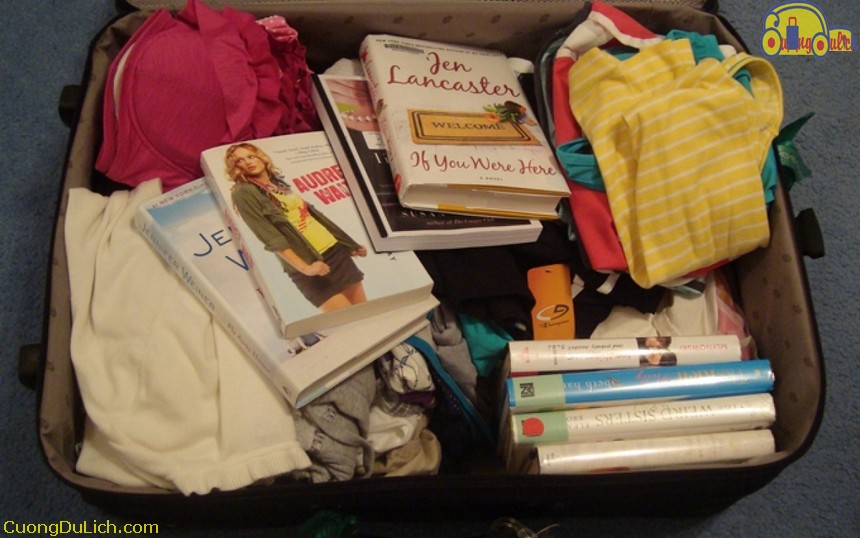
24/ Can I bring musical instruments on board?
Passengers can bring most musical instruments on board – the size and weight of the instrument will determine whether it can be brought into the passenger cabin or needs to be checked in.
Remember, if you wish to bring a musical instrument longer than one meter in checked baggage, an oversized item handling fee will apply. See below for details.
Small musical instruments
- These instruments weigh less than 7kg, with maximum dimensions of 85 x 36 x 23cm.
- Passengers can bring them into the passenger cabin and store them in the overhead compartment. The weight of the instrument is counted towards the carry-on baggage allowance.
Larger musical instruments
For larger instruments, passengers may purchase a seat for the instrument or have it checked in as baggage. If it weighs more than 15kg, it must be checked in as baggage and an oversized item handling fee will apply.
- If your instrument needs to be placed on a seat, contact the airline to make a reservation.
- There are limited quantities of larger instruments allowed in the passenger cabin on each flight.
- For large instruments (maximum dimensions 120 x 45 x 20cm), the allowance is 2 per aircraft.
- For oversized instruments (maximum dimensions 140 x 45 x 50cm), the allowance is 1 per aircraft.
If you bring a musical instrument case into the passenger cabin, it must have a handle to secure it to the seat and ensure safety.
Make sure the instrument is securely packaged as airlines are not responsible for any damage that may occur. And you must inform the airline before booking to check the specific terms for each type of musical instrument.
25/ Can I bring my golf clubs?
Yes, passengers can bring their golf clubs and golf bag, but remember; an oversized baggage handling fee applies to any item with one side longer than one meter (1000mm, 39in), including wheels, handles, and packaging.
Ensure your golf clubs, balls, shoes, and umbrella are securely packed in a closed golf bag.

26/ Can I bring a fishing rod on the plane?
Yes, you can bring a fishing rod, but please note that an oversized baggage fee applies to any item with one side longer than one meter (1000mm, 39in), including wheels, handles, and packaging. If you can pack the fishing rod in packaging with sides not longer than one meter, you will not have to pay the oversized baggage fee.
Make sure to protect the fishing rod during the flight. The best way is to wrap it in a PVC pipe with a screw cap, PVC pipe, or electrical conduit pipe (you can find these items at most fishing stores).
Remember not to attach the fishing rod to other luggage. Also, keep in mind that each bag or item cannot weigh more than 32kg.
27/ Can wheelchairs and strollers be checked in?
Wheelchairs are not counted as part of the standard checked baggage allowance if the passenger is a wheelchair user. Each passenger can check in one (01) wheelchair free of charge.
Children’s strollers are not counted as part of the standard checked baggage allowance if the passenger is traveling with an infant or small child. Passengers traveling with infants or small children can check in one (01) children’s stroller free of charge.
If the above conditions are not met, wheelchairs/strollers will be included in the standard free baggage allowance and will incur an excess baggage fee if the total weight exceeds the permitted standard.
28/ Can fish sauce and soy sauce be brought on the plane?
Yes, they can be brought on board, provided that you pack them properly and take responsibility in case of spillage.
The regulations for carrying liquids on domestic flights for all airlines state that passengers are allowed to carry no more than 5 liters of liquid on board as checked baggage, with a maximum of 3 liters for soy sauce, fish sauce, with each liquid container not exceeding 1 liter.
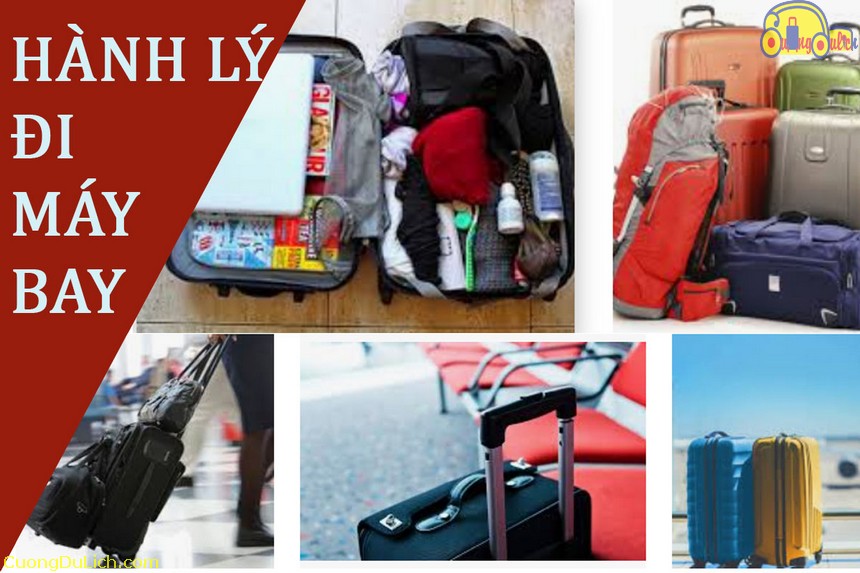
Requirements for packaging fish sauce:
- For fish sauce and other liquid substances contained in bottles, jars: These bottles/jars must be wrapped in plastic or in plastic bags to prevent leakage of liquid in the cargo hold.
- The maximum container capacity should not exceed 1L
- Each bottle must be tightly sealed and wrapped individually with layers of tape
- The amount of liquid in each bottle must not exceed 95% of the total bottle capacity
- These bottles must be placed in foam boxes or plastic boxes or containers with waterproof material, then sealed, taped carefully to avoid leakage or spillage during transportation and stacking. Each foam box/plastic box/container with waterproof material must be covered with a nylon layer with a thickness of at least 1mm
29/ Can you bring cigarettes on a plane?
Traditional cigarettes or Vapes (Electronic cigarettes) are both types of restricted carry-on baggage on airplanes. This means you are allowed to bring them but in limited quantities and must comply with the airline’s regulations. Most airlines allow you to bring a small safe pack of cigarettes or light cigarettes that do not contain addictive substances, do not have the ability to absorb liquid fuel according to the regulations for dangerous goods. Although you are allowed to bring them on the plane, you are absolutely not allowed to use cigarettes on the plane.
Regarding electronic cigarettes when bringing them on a plane, you need to follow these regulations:
- It is best to separate your electronic cigarette samples and put them in plastic bags to ensure that the security check process is not hindered by customs. Place electronic devices such as batteries and chargers in one bag, the cigarette in another bag, and the e-liquid in a third bag. Always remember that the liquid regulation for carry-on baggage on international flights allows only 100ml/1 bottle, so you must ensure that the e-liquid of your vape is divided into small portions according to the correct volume. The cigarette is left empty or placed in a plastic bag, inside which there is no liquid.
- To make the security check process easier, you should keep the cigarettes and liquids in the same bag so that you can comply with the security agency’s requirements without having to search through your luggage when requested. Avoid putting batteries in the standing carry-on luggage box as this could cause trouble during security checks.
- You should declare to customs that you have electronic cigarettes in your luggage to facilitate customs inspection.
Items prohibited from being brought on board during international flights
30/ Items prohibited from being brought on board in most countries
Similar to domestic flights, international flights also prohibit the items mentioned above. In addition, there are other regulations such as:
- Prohibition of counterfeit goods, goods without invoices.
- Prohibition of bringing exotic plant species. Some countries like the US, Australia, or European countries also prohibit bringing exotic fruits for fear that they will be sown in their country.
- Pets are also usually closely examined on international flights.
- Fresh or processed meat and poultry products are also prohibited from being brought to some Asian and European countries.
- Explore specific regulations on luggage for some countries
International airlines serving cross-country flights are usually very strict about luggage, each country you fly to has its own regulations. Therefore, you need to research the specific regulations of each airline as well as the country you are planning to land in. Some items prohibited from being brought on board in some countries that you can refer to are:
31/ Items not allowed to be brought on board to Japan:
All types of livestock, poultry, bird eggs, bird feathers; products, by-products processed from poultry,…
All plants, seeds, frozen fresh fruits and vegetables.
Unlabeled food.
32/ Items not allowed to be brought on board to the US:
All types of seafood, fresh food, processed products from pork, chicken, beef such as: bologna, canned meat, sausages, chorizo, beef jerky, shredded pork,…
All fruits, vegetables, seeds, soil,…
33/ Items not allowed to be brought on board to Australia:
- Products made from eggs, milk in cooked, powdered, fresh, dried forms (except powdered milk for children).
- All meat products: Fresh, dried, frozen, cooked, smoked, sausages, preserved meats.
- Packaged products containing meat such as: mooncakes, instant noodles, soups with shredded meat, ground meat. Pork floss, shredded chicken, beef jerky,…
- All fresh frozen fruits, vegetables, seeds, herbal ingredients.
- Herbs, traditional medicines: deer antler, deer velvet, turtle shell, honey,…
- Live animals, products made from bird feathers, animal fur,…
34/ Items not allowed to be brought on board to South Korea:
All types of plants, fruits, vegetables, agricultural and forestry products.
35/ Items prohibited from being brought on board to Singapore:
Chewing gum (except dental gum).
Chewing tobacco, electronic cigarettes, fake tobacco products.
Wild animals; wild products, products made from wild animals such as: eggs, animal skin, animal fur,…
36/ Items prohibited from being brought on board to China?
Plants, animals infected with diseases, products, insects, harmful organisms.
Food, medicine, products from epidemic areas,…
37/ Items not allowed to be brought on board to Dubai
- Alcoholic beverages are prohibited.
- Pork and products made from pork.
- Wireless transmission devices.
- Products made from ivory, animal skin.
- Goods and currencies originating from Israel and associated countries.
- Items that offend Muslims.
- Sedatives or anesthetic drugs.
38/ Items not allowed to be brought on board to the UK
Prohibited drugs, stimulants, all kinds of food from meat to fruits and vegetables without permits.
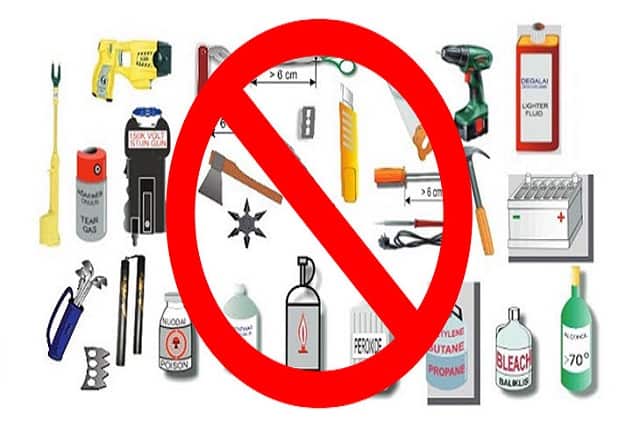
39/ Items prohibited from being carried on flights to Germany:
Prohibited radioactive substances
dried meats and vegetables;
objects of historical and artistic value from the pre-Columbian period.
40/ Items prohibited from being carried on flights to Italy:
- prohibited foods, meats of unknown origin, unpackaged meats;
- products made from animal fur, animal skin, ivory;
- foods such as coffee, tea, sugar, pepper; wireless electronic devices and walkie-talkies;
- plants (if needed to be carried, must have a phytosanitary inspection certificate);
- electronic audiovisual devices without a CE origin certification label.
41/ Items prohibited from being carried on flights to France:
prohibited all live plants;
prohibited ivory, products made from animal skin;
prohibited paint, polish, and cleaning solvents.
42/ Items prohibited from being carried on flights to Russia:
prohibited products made from leather, animal fur, animal teeth;
various foods including coffee and tea;
radio frequency devices, directional devices; transceivers;
various spray containers.
Tips to help you prepare standard luggage without adjustments
Preparing luggage, complying with luggage regulations, will help you avoid inconvenience and trouble at the airport during security checks. Therefore, the steps to help you prepare “standard luggage without adjustments” when participating in flights that you should refer to include:
First, you need to understand the baggage policy of the airline you are flying with. This includes regulations on dimensions, weight, permitted/restricted items to carry/forbidden items to carry on board, regulations on liquid baggage, pharmaceuticals, medical equipment…
Secondly, for international flights, each country you fly to has its own regulations, so you should also learn more about the prohibited items to carry on board in those flights. Some regulations may cause you to “lose money, suffer losses”, so this is a step you should not overlook.
Lastly, make a list of items to bring. Double-check to ensure that all the items you bring for the trip comply with the regulations.
Video on luggage regulations when flying
These are all items that may affect the safety of the flight, so when traveling by plane, you need to pay close attention. These regulations are compiled by Viet Travel Blog at the current time and may change in the future. If you still have concerns about the items prohibited from being carried on board, you can contact Viet Travel Blog for more specific answers. We will continue to update the list of items prohibited from being carried on board in the upcoming videos.

